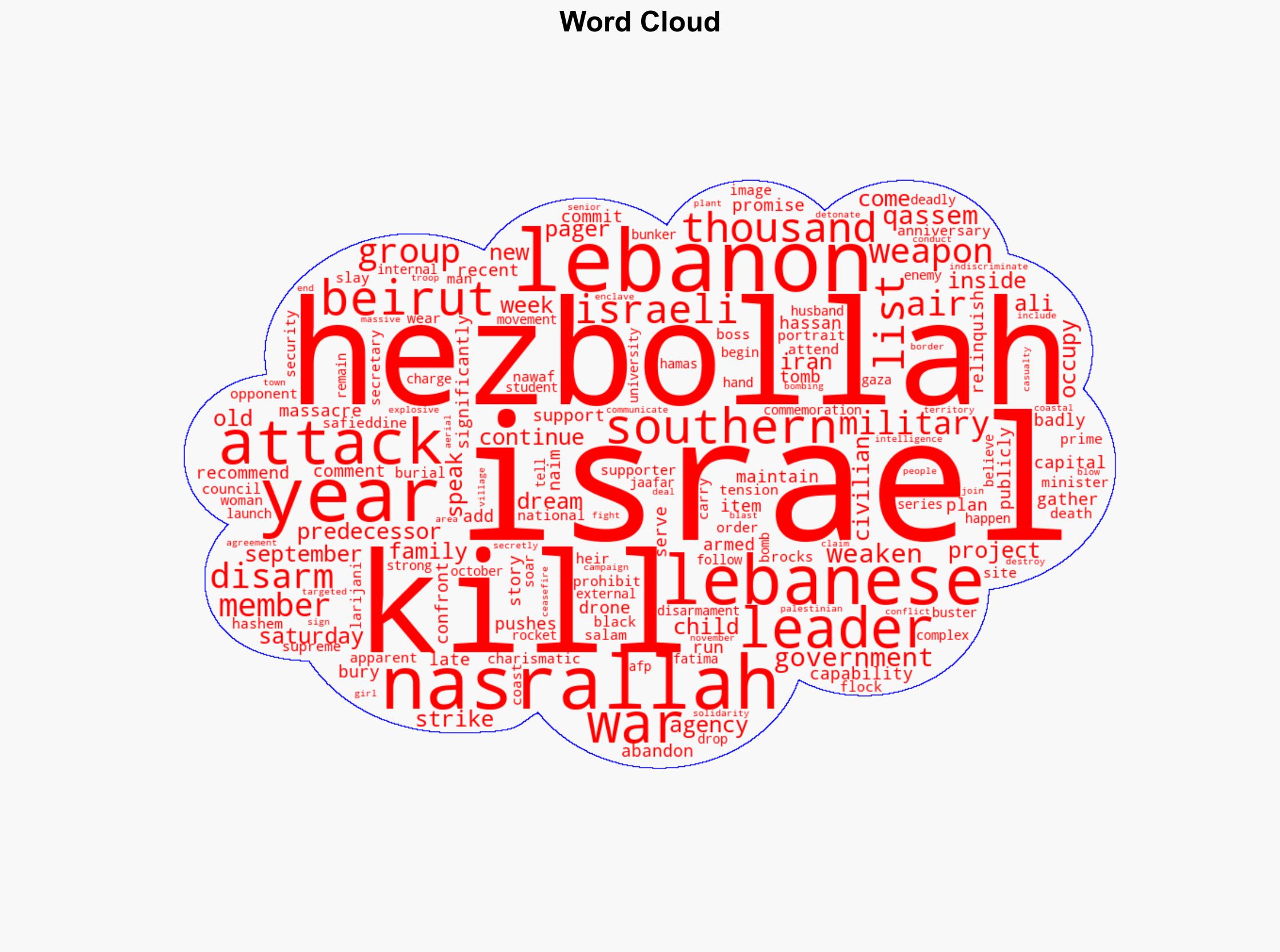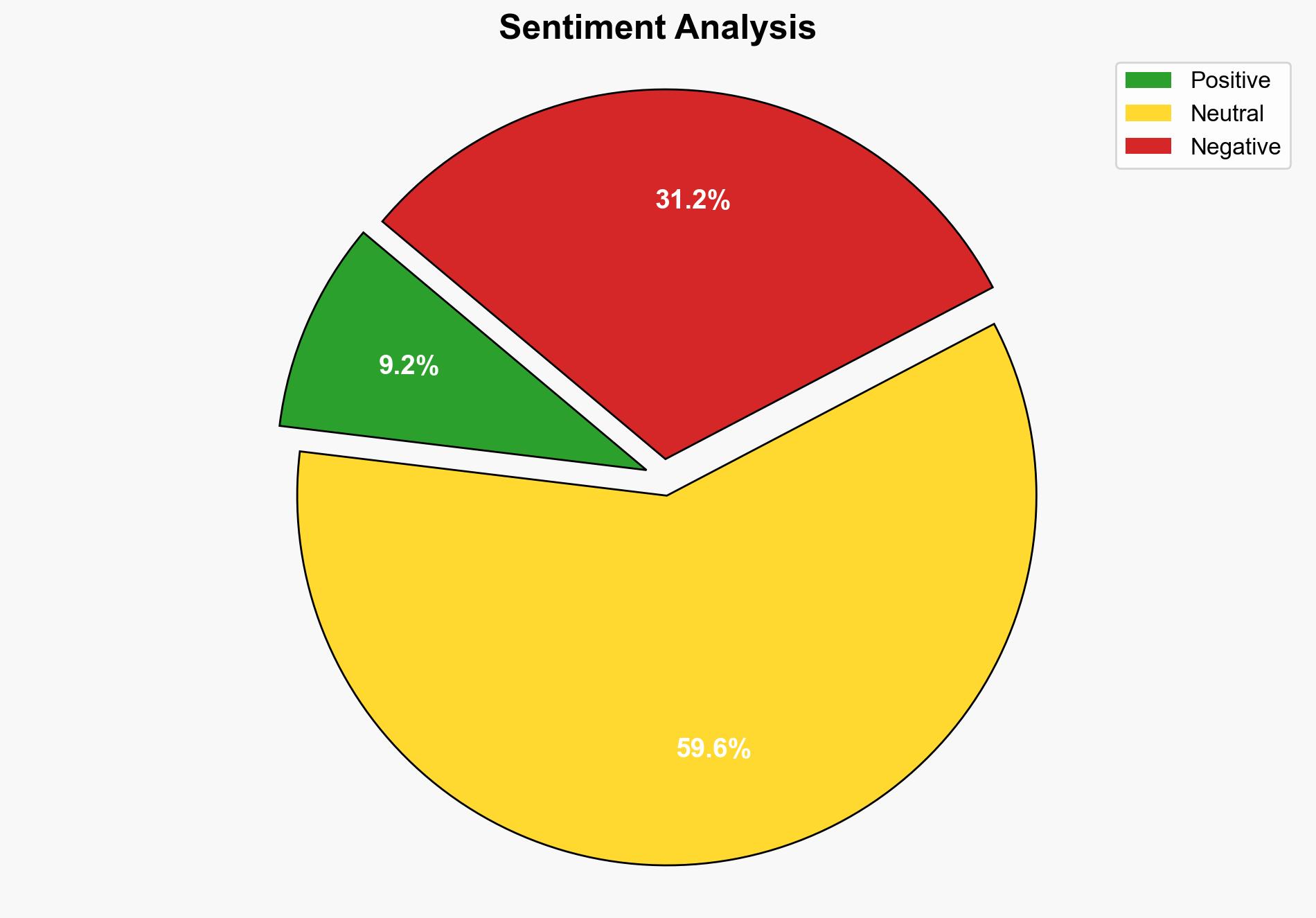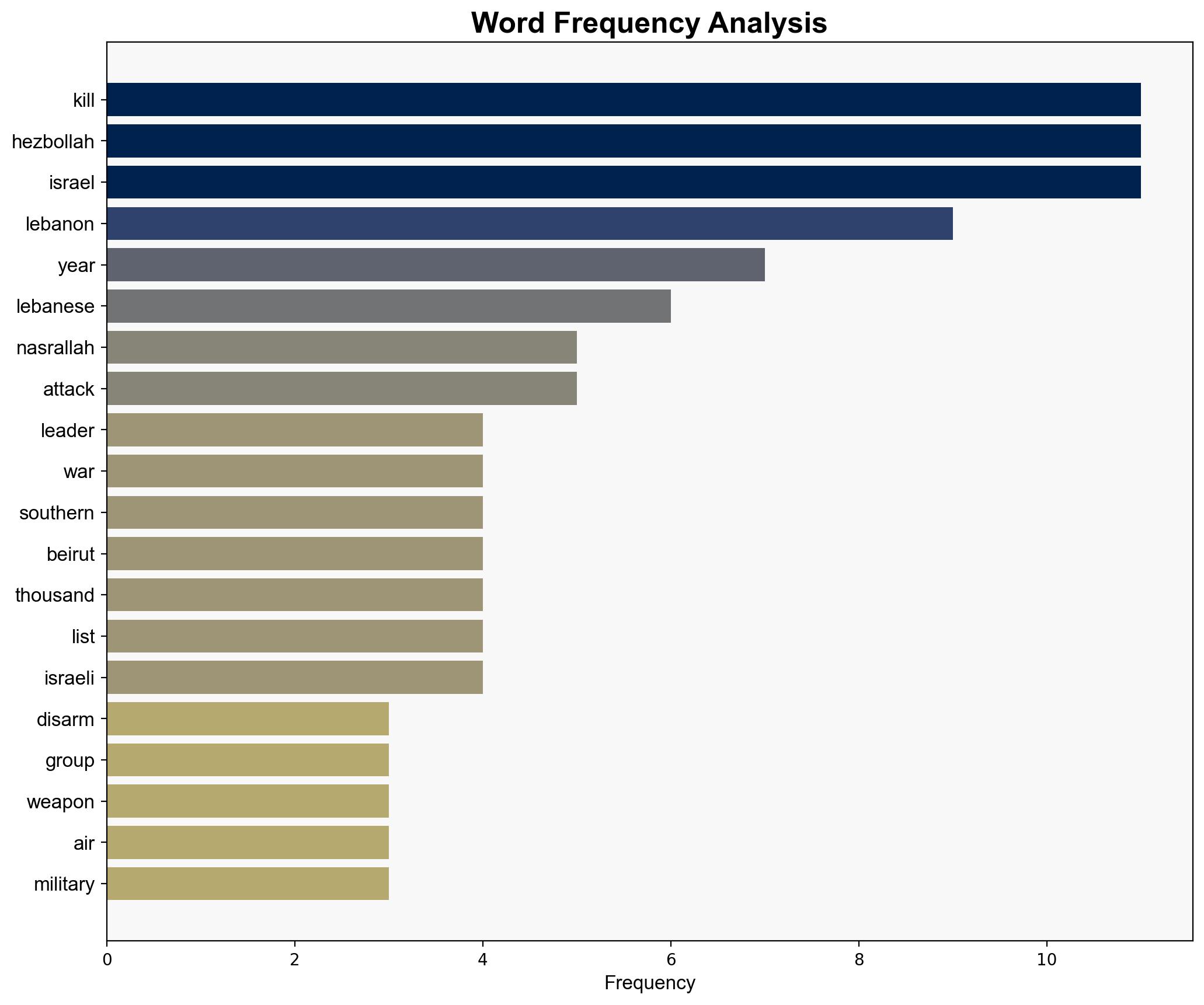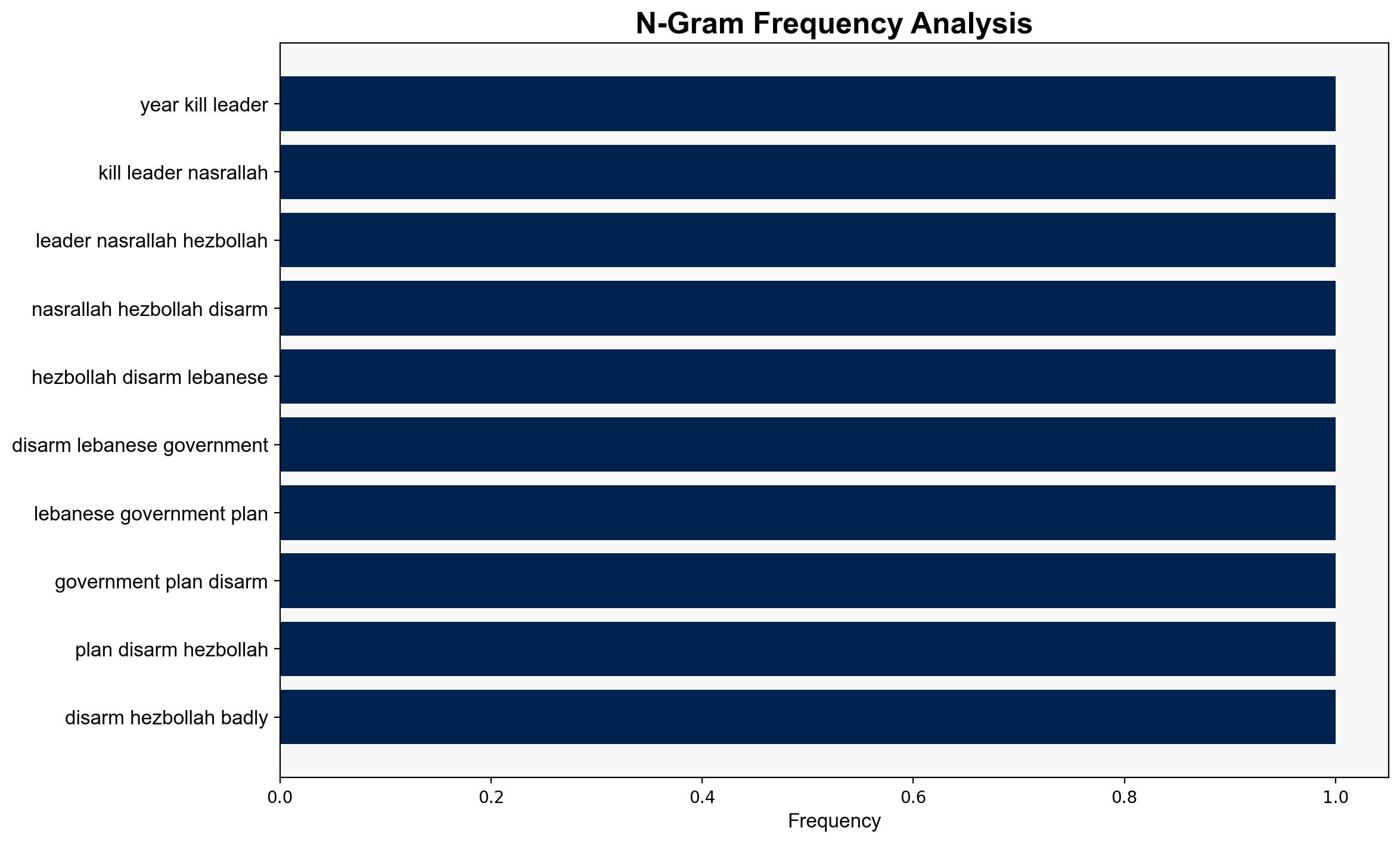One year after killing of leader Nasrallah Hezbollah says no to disarming – Al Jazeera English
Published on: 2025-09-28
Intelligence Report: One year after killing of leader Nasrallah Hezbollah says no to disarming – Al Jazeera English
1. BLUF (Bottom Line Up Front)
Hezbollah remains resolute in maintaining its military capabilities despite external pressures and the assassination of its leader, Hassan Nasrallah. The most supported hypothesis is that Hezbollah’s stance is driven by strategic deterrence against Israel and internal political leverage within Lebanon. Confidence level: Moderate. Recommended action: Monitor Hezbollah’s military activities and diplomatic engagements to anticipate potential escalations.
2. Competing Hypotheses
1. **Hezbollah’s Military Retention for Deterrence**: Hezbollah refuses to disarm primarily to maintain a deterrent against Israeli aggression and to assert its role as a defender of Lebanon against external threats.
2. **Hezbollah’s Political Strategy**: The refusal to disarm is a strategic maneuver to consolidate political power within Lebanon, leveraging its military strength to influence the Lebanese government and counter domestic opposition.
Using ACH 2.0, the first hypothesis is better supported by the evidence of continued Israeli military actions and Hezbollah’s historical narrative of resistance. The second hypothesis is plausible but less supported due to the lack of direct evidence linking military retention solely to political gains.
3. Key Assumptions and Red Flags
– **Assumptions**: It is assumed that Hezbollah’s military capabilities are primarily for deterrence and not for offensive operations. Another assumption is that the Lebanese government lacks the capacity or will to enforce disarmament.
– **Red Flags**: The potential for Hezbollah to escalate military actions under the guise of deterrence. The lack of clear evidence on the Lebanese government’s stance on disarmament raises questions about internal political dynamics.
– **Blind Spots**: The role of external actors, such as Iran, in influencing Hezbollah’s decisions is not fully explored.
4. Implications and Strategic Risks
– **Geopolitical Risks**: Continued military tensions between Hezbollah and Israel could destabilize the region, potentially drawing in other actors.
– **Internal Lebanese Dynamics**: Hezbollah’s military stance may exacerbate internal divisions within Lebanon, affecting political stability.
– **Escalation Scenarios**: A miscalculation or provocation could lead to renewed conflict, impacting regional security and economic conditions.
5. Recommendations and Outlook
- Enhance intelligence gathering on Hezbollah’s military activities and regional alliances.
- Engage in diplomatic efforts to reduce tensions between Hezbollah and Israel, potentially through third-party mediators.
- Scenario Projections:
- Best Case: Diplomatic engagement leads to a reduction in hostilities and a gradual disarmament process.
- Worst Case: Escalation into full-scale conflict, drawing in regional powers.
- Most Likely: Continued status quo with periodic skirmishes and diplomatic stalemates.
6. Key Individuals and Entities
– Hassan Nasrallah (deceased leader)
– Naim Qassem (current leader)
– Hashem Safieddine (heir apparent)
– Ali Larijani (Iranian official)
– Nawaf Salam (Lebanese Prime Minister)
7. Thematic Tags
national security threats, regional focus, counter-terrorism, geopolitical dynamics




